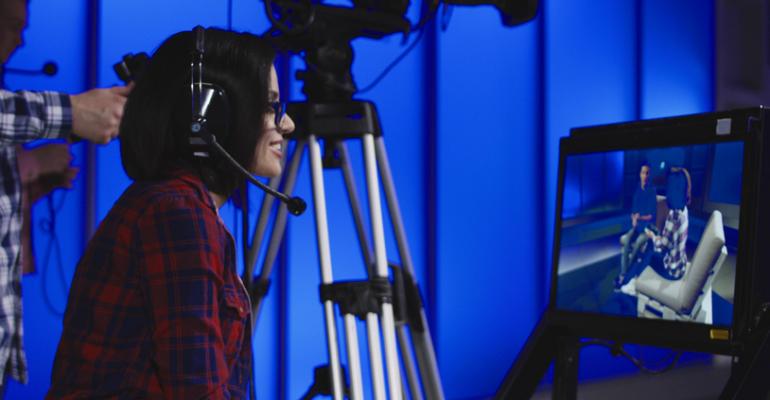October 30th, 2018: As I sit at my desk and type this article, the keynote presentation from Apple's launch of the iPad Pro and upgraded MacBook Air from the Brooklyn Academy of Music in New York livestreams on my split screen. A preproduced video rolls first, to give us background on the path Apple developers followed to create the latest device and on how the new product features can be used. When that's done, the stage show that follows is masterful: expertly choreographed, akin to a network television program.
As someone who works with organizations to craft video strategies for their events, I find Apple's product launch to be a perfect case study.The company weaves video seamlessly into the fabric of its events. One takeaway that has already struck me as I watch online:
Start the planning process around your messaging. With the core messages defined, you'll be able to develop your "run of show." That initial legwork will help the event team to identify exactly where video can and should play a role. For instance, Apple's preproduced video brought excitement about the product and highlighted in interesting ways technical features once relegated to the user manual.If you want to leverage video the way Apple does, it has to be part of your holistic thinking about how to tell your story.
If you're planning a customer event, a sales meeting, or a summit, pay attention to the video tactics Apple employs to enhance its events:
• Staging: Covering the proceedings for maximum effect requires multi-camera video production. The Apple stage show is captured with careful attention to all elements of the production, including lighting and sound. It is professionally directed and orchestrated in tandem with a "show caller" to make the stage show for in-house guests and those watching the live broadcast work harmoniously.
• Streaming: Extending the event beyond the venue and sharing it with global audiences is paramount. Apple makes the livestream available across desktop, laptop, tablet, and smartphone with no registration and, in most cases, no software to download—just a button to click.
• Showcasing: Using a mix of live action and animated video, Apple focuses viewers' attention on the key features of its products while sharing useful insights from executives. Each segment is tightly produced, musically driven, and beautifully shot, keeping attendees and viewers energized and captivated. Further, at the conclusion of the events, these video assets live on to educate other customers, prospects, and media outlets.
As the Apple event concludes, one more tip comes to my mind:
Think beyond the event. Before you start creating video content, your team should consider all the ways it will be used so that you capture the event in a way that works well across those avenues. Perhaps you create a series of segments for social media, or repurpose video case studies as online marketing collateral.
The fact is, the brilliance of Apple's events comes from much more than simply the allure of the products they feature. It also comes from incorporating video as a content-delivery medium to the audience, and as a content-capturing medium that allows distribution at that moment and in the future. For marketers, event planners, and conference producers, these are valuable lessons to keep in mind as you develop a video strategy for your own events.
Jason Cohen is president of NYC Video Pros, which works with organizations in various industries on video production and livestreaming solutions. He can be reached at [email protected] or (212) 931-4866.





